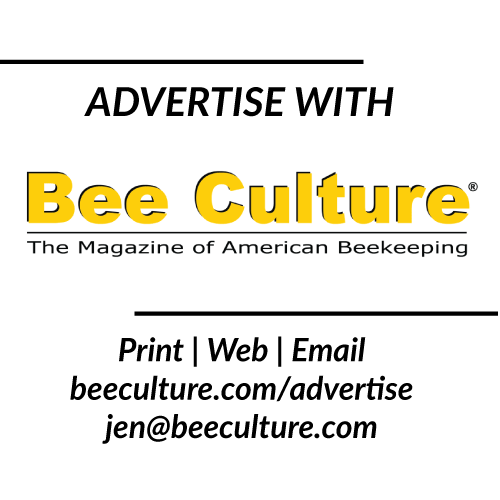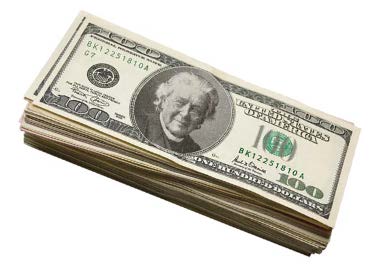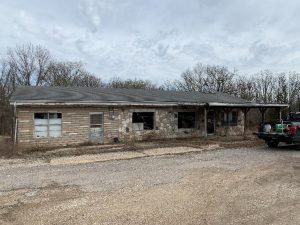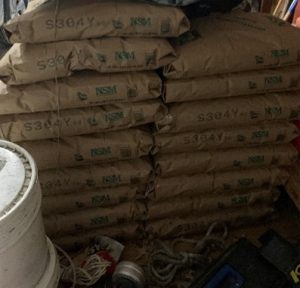By: Jon Zawislak
Government agencies, private entities and virtuous citizens have all been concerned for the plight and peril of pollinators for over a decade now. Since CCD entered our vocabulary in 2006 we have seen alarming headlines with gloom and doom predictions for the disappearing honey bee, and by extension, the end life as we know it. Many have considered picking up a hive tool and trying their hand at beekeeping, and it has taken on a new image. No longer a quaint pastime for bearded old men named Burt, tending bees is a trendy way to hold Mother Nature’s hand while you help save the planet. Celebrities like Morgan Freeman, Scarlet Johansson and Leonardo DiCaprio keep bees. Guitar wizard Steve Vai and funky bass thumper Flea have joined our ranks. Michelle Obama had a hive installed in her white house vegetable garden. The Pope has a number of hives at what has been the Vatican’s Summer residence since the 16th century. Even the fictional sleuth Sherlock Holmes has helped to popularize the hobby.
But, as you well know from experience, getting started with honey bees is not cheap. Many of the expenses are on the front end, leading to sticker shock for some who just wanted to do their part to protect and promote these invaluable pollinators. Of course, no agricultural venture comes cheap. Want chickens? Price out the feed, watering trays, heat lamps and a good coop, then calculate how much each delicious farm fresh egg is actually costing you. The same goes for bees. You may have seen the price tag on a jar of fresh local honey at your farmer’s market and thought you could just bottle your own liquid gold. But then you learned that most bee colonies won’t even produce a surplus crop of honey until their second year. It can take you a while to see a return on your investment in bees, but it can happen if you stick it out.
Where can you turn for help? A recurring question I receive at the Cooperative Extension office is how to get a government grant to start keeping honey bees. People complain about crooks in charge and having to pay taxes, but the same folks line up with their hands out when checks are being issued. Have you heard rumors that there is free federal cash available for bees, and wondered how you could get in on that?
The short answer is a disappointing no. There is no large federal fund writing blank checks to pay citizens to start new bee hives. The long answer is yes, there are numerous programs that can benefit beekeepers, either directly or indirectly.
Despite increased awareness of the plight of the humble bee, and the imperative need to maintain a healthy pollinator population, the government simply isn’t going to fund your hobby interest backyard beehives any more than they will pay you subsidies to grow a tomato patch, learn to knit, take up the banjo, or collect rare stamps.
Perhaps you think they should. Pollinators benefit the environment in countless ways. And there is certainly a vested public interest in keeping honey bees around, for their agricultural and economic benefits. But given the economic state of things in the wake of the pandemic, don’t hold your breath for a bee hive bailout.
“I heard there was a program…”
I receive many phone calls and emails that begin this way, so I started trying to track down the source of these rumors to see what opportunities do exist. I found some vague articles online, but trying to trace their origin leads in a circle of web pages and social media posts linking to each other and back around to where you started, with little useful information. Some stories promise plenty, but are short on concrete details. So after a few rounds of frustrating clicks on vague posts, many people will call their Cooperative Extension offices for clarification. And unfortunately, folks may not find the answer they hoped for.
It’s not that public funding for beekeeping hasn’t been tried. In 2005 Dr. David Tarpy, a honey bee researcher at North Carolina State University, received a grant from the Golden LEAF foundation, which funded agricultural development projects through their state’s tobacco settlement. Under this program, they were able to provide pairs of hives and package bees to new beekeepers who took an introductory class and joined a local beekeeping association.
Participants still had to purchase their own protective clothing and other accessories, but that was a relatively minor expense by comparison. A couple of standard bee hive kits and two spring packages of honey bees can easily run you $600 or more in today’s money. Dr. Tarpy estimates that the half-life for new beekeepers sticking with it runs about 2½ years. That is, every 2½ years, about half of those who take up beekeeping will quit for one reason or another. Another half of those who remained will be finished in another 2½ years, and so on. The initial program funded 250 individuals. So by his estimate, there may be about four individuals from that original group who still light their smokers today.
Another annual program, administered through the Virginia Department of Agriculture, has tried to promote beekeeping by providing up to three hives to households that apply for them. Recipients are selected randomly from a pool of eligible applications received each year, with the number of hives available being contingent on recurring funding from their state’s legislature. While bee hives were distributed, honey bees and other tools were not provided. Recipients were required to establish bee colonies in their new hives within one year of receipt. No data was available about the success of the Virginia program to increase the number of bee colonies in their state.
Fortunately for the bees, there are always more people who want to join the noble ranks of beekeepers every year. Unfortunately, many of them will also give up on it after a short time. But why the exponential drop-off?
There have been some other attempts to jump start beekeeping with other programs, but most have had similar results as North Carolina. Why is that? Well, you may have discovered that successful beekeeping involves work. Some chores have to be done on the bees’ schedule, and not at our leisure. We endure hot weather in bee suits, heavy lifting, and those pesky stings – some people don’t seem to like those. Generally speaking, when people have to invest their own funds, they are more likely to put in more effort. But when they have no financial skin in the game, it may be easier to simply shrug it off and say we tried, but that bee thing really wasn’t for us.
A lot of beekeeping books and blogs, like gardening books and cookbooks, tend to present the most encouraging information – pretty flowers, smiling beekeeper families holding frames of honey, and jars of freshly bottled and neatly labeled honey that suggests a free gold mine. And like the California gold rush, people have flocked to beekeeping only to find out they can’t simply pick up big nuggets from a stream by the shovel full.
Cookbooks show beautifully staged photos of delicious looking meals, with a note that says “feeds four, cooking time 10 minutes” but conveniently omit showing you how many pans and measuring cups you’ll have to scrub. We love garden-fresh veggies, and many have been known to plant in the spring with the best intentions, but before long we become overwhelmed with other Summer activities, and before long the weeds are higher than the corn.
Likewise, modern beekeeping has challenges. There are mites and viruses, bacteria and beetles, fungi and failing queens, pesticides and pollution. And there are scores of books, blogs and online videos that often seem to give conflicting advice. Someone new to the craft will have to dive in and claw their way up a very steep and confusing learning curve for the first couple of years. Which is why so many will throw in their veil and try other pursuits. If you can stick it out without losing your shirt, though, you might have what it takes to succeed with honey bees.
But what about all those supposed grant programs? Most granting agencies prefer to fund projects that produce results – either practical solutions or “pure science” endeavors to increase knowledge for its own sake, which will (hopefully) lead to practical applications. And most want you to include a statement about how your results will be made public (with a little credit to themselves for their funding). Even the most generous grants rarely fund “brick and mortar” structures for you. They may help you with equipment and supplies, salary or labor, but will not simply pay you to build yourself a barn or honey house or other structure – including those relatively small structures we call beehives. Those types of real estate improvement are generally going to require your own capital since they are ultimately for your own use and convenience. And for a hobby beekeeping operation, you will have to find a way to fund your own fun.
If you are considering beekeeping on a commercial scale (large or small), you can look into a small business loan. The USDA offers a farm loan program specifically to help farmers and ranchers start up an operation, or to expand or maintain a family farm, often with low interest rates and credit terms. Adding working pollinators to an existing operation, or producing honey as a specialty crop, can qualify for this type of farm expansion. These loans can help with operating costs such as ivestock and feed, new equipment, or even family living expenses while an operation gets up and running. Farm Ownership Loans can be used to purchase a farm or ranch, to expand an existing one, or to construct or improve buildings, or even help conservation efforts to protect or improves soil and water resources.
Microloans are particularly intended for small operations and non-traditional or specialty crop operations. They may be smaller in scale, but often require less daunting paperwork. There are even special categories of funds earmarked to help Native American tribe members, youth agricultural projects, or to assist women and minorities to purchase and operate a farm or ranch. The USDA’s Farm Service Agency has a Beginning Farmers and
Ranchers program that can provide guaranteed credit to assist a new generation to purchase land and begin to operate in agriculture. Go to www.farmers.gov/fund/farm-loan-discovery-tool to see what options are available, or visit with your local FSA office to talk to a representative in person.
If you already keep bees, you know that they are most productive when they are healthy and have access to good, diverse forage. There is only so much that beekeepers can do inside the hive to help out (controlling mites and diseases, for instance). A lot of what happens to bee colonies is dictated by outside conditions, literally from the ground up. By improving habitat in areas around an apiary, we increase the bee’s access to a greater diversity of flowering plants. When done right, a succession of plants can provide pollen and nectar all season long. This is especially important in the early build-up period before the main nectar flow, as well as late fall, when hives are building up their winter stores, and fattening up the brood that will become the overwintering bees. Ideally bees should be self-sustaining, but humans have often modified the environment to make that harder. So anything that improves their surroundings is a good thing.
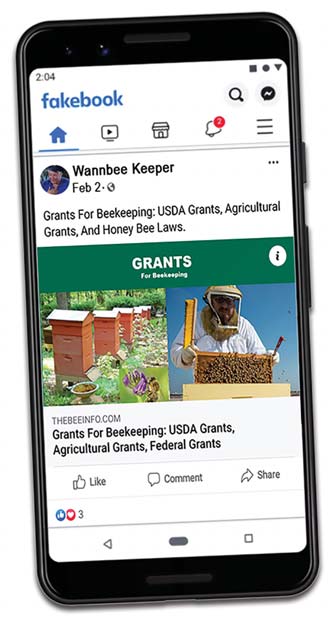 The USDA’s Environmental Quality Incentives Program (EQIP) provides financial and technical assistance to agricultural producers to address natural resource concerns and deliver environmental benefits. This voluntary conservation program helps farmers make conservation work for them. Each state has specific priorities and geographic regions they wish to target. Their Conservation Stewardship Program (CSP) helps landowners build on current efforts while strengthening existing agricultural operations. By improving grazing conditions in pastures or establishing and improving wildlife habitat, landowners can improve nutritional conditions for bees. And the Conservation Reserve Program (CRP) actually pays landowners annually to voluntarily remove land from agricultural production and plant species that improve environmental health and provide wildlife habitat.
The USDA’s Environmental Quality Incentives Program (EQIP) provides financial and technical assistance to agricultural producers to address natural resource concerns and deliver environmental benefits. This voluntary conservation program helps farmers make conservation work for them. Each state has specific priorities and geographic regions they wish to target. Their Conservation Stewardship Program (CSP) helps landowners build on current efforts while strengthening existing agricultural operations. By improving grazing conditions in pastures or establishing and improving wildlife habitat, landowners can improve nutritional conditions for bees. And the Conservation Reserve Program (CRP) actually pays landowners annually to voluntarily remove land from agricultural production and plant species that improve environmental health and provide wildlife habitat.
The Natural Resources Conservation Service (NRCS) is a branch of the USDA that works with farmers and landowners to improve the quality of soil, water and air with practices that also enhance habitat for pollinators and other wildlife. Their programs can potentially benefit beekeepers by improving the forage conditions for bees. NRCS programs provide technical and financial assistance to help landowners provide safe and diverse sources of nectar and pollen for bees. This can be through planting cover crops, planting native wildflowers and grasses in buffer areas and other areas not in crop production, and improving the management of grazing and timber lands. More than three dozen NRCS conservation practices currently benefits pollinators. Contact your local NRCS office to learn more about what you can do on your property.
Individual states may also have specific initiatives. Here in Arkansas, landowners can enroll in the Acres for Wildlife program administered by the Arkansas Game and Fish Commission. Citizens and wildlife biologists work together to improve habitat by considering the needs of wildlife (including pollinators) in conjunction with good farming, livestock production and forestry practices. See what programs your own state’s wildlife agencies are offering.
Another broad program called Project Wingspan is administered through numerous cooperating government agencies and private organizations to promote and improve pollinator habitat on public and private lands. In particular, they seek to connect fragmented habitats along the monarch butterfly’s annual migration route with more suitable native wildflowers. Of course, these habitat improvement efforts will make the world a better place for the birds and the bees as well the butterflies. Visit pollinator.org/wingspan to learn more.
Beekeepers and landowners can also benefit from talking to a Farm Bill Biologist. These specialists are trained to assist private landowners and farmers in navigating the numerous government programs. They can help tailor conservation programs specifically to your goals, and can assist you after programs have been implemented. Their one-on-one consultations are free of charge, and these experts can even make site visits and specific recommendations for your situation. To find your nearest specialist, visit quailforever.org/Habitat/findBiologist.aspx.
Even if you don’t want to enroll in a government program, or your property doesn’t qualify, you can still take advantage of free technical advice and resources from many of these agencies to help plan and implement your own conservation efforts.
The government has deep pockets and they bail out everyone else, so why not beekeepers? Well, actually they do, under some circumstances. The USDA’s Emergency Assistance for Livestock, Honey Bees, and Farm-raised Fish Program (ELAP) helps these producers by reimbursing a portion of eligible losses due to adverse weather or other disasters, including blizzards and wildfires, as determined by the Secretary of Agriculture. ELAP covers losses that are not included under other disaster assistance programs, such as the Livestock Forage Disaster Program (LFP) and the Livestock Indemnity Program (LIP).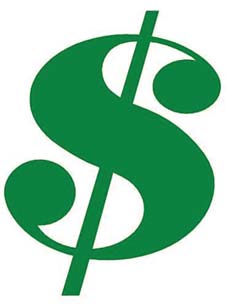
ELAP is also administered by the FSA. For more information on this and other programs, visit farmers.gov/recover or contact your local FSA County Office to see if your situation qualifies for this program. Good record keeping is vital to processing a claim. Take advantage of your state’s Apiary inspection services. An on-site colony inspection will help you maintain clear records of colony numbers and health. Without a reliable paper trail, ELAP claim processing could be delayed or denied.
The federal Rural Business Enterprise Grant Program fund projects that will start businesses, create jobs, and inject cash into a local economy, and often center on improving community access to produce and other food. Bees can be an important component of that. Conservation Innovation Grants focus on sustainable agriculture, so you will need to demonstrate a pioneering approach to beekeeping and promoting conservation efforts. This may be an area to consider for organic farmers looking to improve production with the addition of a pollinator workforce.
While there are technically no federal grants available specifically for beekeeping, there are many other awards and programs that can include an aspect of beekeeping. Grant programs come and go over time, and different agencies offer different types of assistance to different people and groups. All federal grants are advertised and administered through the website grants.gov. Users can search categories and look for things that may apply to their situation. Be prepared for a lengthy application process. These can be simple to understand, but may be very detailed in structure, and can be time-consuming to complete.
Getting started with beekeeping ain’t cheap. It’s a challenging activity, which is why many who take up a smoker will extinguish it within the first few years. But it can be richly rewarding. And doing it yourself will make your first jar of honey taste all that much sweeter.



